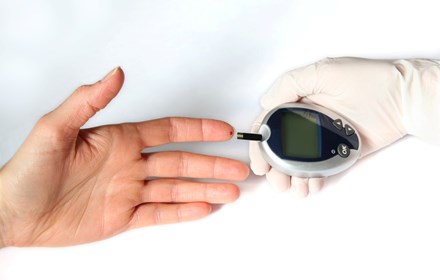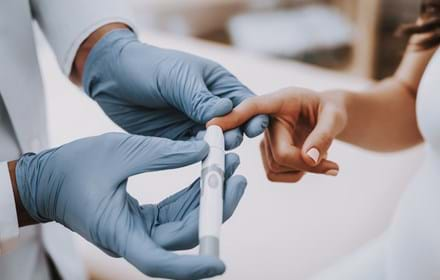
Treatment could help speed up healing for diabetes related foot ulcers
People with diabetes-related foot ulcers have reported successful healing of wounds using an oxygen-based treatment as part of a recent study.
The study was conducted by South Tees NHS Hospitals Foundation and treated 20 people with non-healing diabetes-related foot ulcers.
After four weeks, all those taking part in the trial reported a reduction in the wound surface area, while a quarter reported a 100% reduction in wound area after using Granulox – a new oxygen therapy.

Successful healing of diabetes-related foot ulcers reported in new study
The results of the study were recently presented at the European Wound Management Association (EWMA) conference, and published in the British Journal of Nursing.
The average wound size reduction was 62.3%, and wounds which had been present for 12 months or more reduced by an average of 24% within the four week trial period.
Sharon D Bateman, study author and Specialist Tissue Viability Nurse, said: “Diabetes-related foot ulcers have a significant impact on a patient’s quality of life and place patients at higher risk for lower limb amputations. The management of diabetes-related foot ulcer patients can place a significant burden on NHS resources. Aside from the clinical benefits seen in the trial, 75% of people were able to apply Granulox independently, making the prospect of people managing their diabetes-related foot ulcer independently or with the help of their healthcare team a distinct reality.”
Emma Howard, Community Diabetes Lead Podiatrist at Oxford Health NHS Foundation Trust and member of the DRWF Editorial Advisory Board, said: “Every new development in wound care gives hope to those with non-healing foot wounds. There are many reasons that foot ulcerations do not heal including, infection, pressure and underlying vascular status. The management of foot ulceration is different in nature to the leg wounds mentioned in the presentation. Dressings/topical wound agents are only one part of the holistic treatment of foot ulceration and no one dressing is suitable for every foot wound.”

Case study: William Gough
William Gough, 64, from Hatfield in Hertfordshire, has had an ulcer wound on his left foot for three years and has neuropathy in both feet, which causes a loss of feeling, and is one of the long-term complications of diabetes.
William has been living with type 2 diabetes for 20 years and has been taking insulin for the last six years.
William has tried a range of treatments over the years to no avail, and was trapped in an endless and frustrating cycle of weekly podiatrist visits to change his dressing and clean the wound.
William’s ulcer started as a blister, which developed as a result of rubbing his foot with a pumice stone. He said: “I’ve had this ulcer for three years now and for about 18 months the wound was completely static, showing no signs of healing at all, which was disheartening and frustrating to say the least.
“Foot ulcers need constant attention and sometimes emergency care; I was on holiday in Yorkshire in the summer of 2014 which I had to cut short by four days after developing a small blister that needed to be checked urgently. My condition means I can never holiday abroad as it’s too risky, and stops me doing even the small things like play football with my grandchildren.”
“Even walking and staying mobile is a chore – people with diabetic foot ulcers are given special shoes with thick soles, which allow you to wear your dressings. But these shoes are very difficult to move around in and make it hard to judge unsteady surfaces on the ground. To make things worse, I was taking antibiotics after an operation in 2000 which has impaired my ability to sense and judge my movements, for example stepping down off a curb is challenging for me. Because of this I am not very active at all, but if there is a chance my wound could heal, this would take away at least one of my mobility challenges.
“I have been using Granulox since May this year and can honestly say it has been the only treatment which has worked. It is so easy to spray on and I use the treatment twice a week now. I noticed the effects of the spray after just four days of using it, when the ulcer changed shape as the treatment breathed life back into it. Five weeks later the ulcer had reduced in size. I am confident that Granulox will help me manage my ulcer in the long term, and can finally see an end to the cycle I was trapped in.”
Support DRWF by making a donation here
Find out more about DRWF-funded research here
Find out more about DRWF fundraising here
For latest update follow DRWF on Facebook, Instagram and Twitter
To receive the charity’s latest bulletins as they become available, please sign up here
Read DRWF diabetes information leaflets here
Join the Diabetes Wellness Network here
I would like to make a regular donation of
I would like to make a single donation of
There are lots of ways to raise money to support
people living with all forms of diabetes.
Bake, Swim, Cycle, Fly ... Do It For DRWF!
Fundraise with us
Recent News


